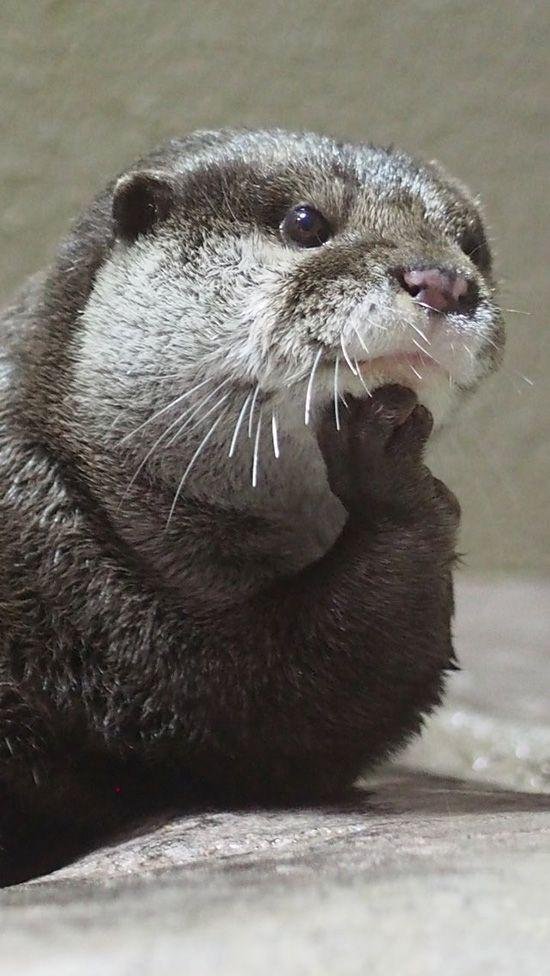
Giant otters are fascinating animals found primarily in South America, especially in the Amazon River basin. Their social structure, communication skills, and hunting techniques reveal a lot about how they think and behave. So, pull up a chair, and let’s dive into the world of giant otters and see just how smart these river-dwellers really are!
Understanding Giant Otters
Giant otters, or *Pteronura brasiliensis*, are the largest members of the weasel family, and they can grow up to six feet long, including their tails! They have sleek, muscular bodies designed for swimming, with webbed feet that help them paddle through the water with ease. But they’re not just built for physical prowess; they also have a complex social structure that hints at their intelligence.
These otters live in family groups that typically include a breeding pair and their offspring. This social behavior is significant! Being part of a family unit means that they communicate and collaborate, which requires a certain level of understanding and strategy. Imagine living in a household where everyone needs to work together to find food and protect each other from predators. That teamwork reflects a smart and organized approach to life.
Cognitive Skills: Problem Solving
When we talk about the intelligence of giant otters, one of the first things to consider is their ability to solve problems. These animals often display remarkable problem-solving skills that help them adapt to their environment. For instance, they can use tools—yes, tools! They’ve been observed using rocks or sticks to help crack open shellfish or even to access food trapped in crevices.
This ability to use objects in their environment shows a level of cognitive functioning that many animals don’t possess. It’s like when you’re trying to reach a cookie jar on a high shelf and grab a chair for a boost. Giant otters think ahead and manipulate their surroundings to achieve their goals, which is a clear indicator of intelligence.
Social Intelligence: Communication and Cooperation
You might be wondering how giant otters communicate with one another. Well, they have a variety of vocalizations, including growls, whistles, and even screams that serve different purposes. This complex communication system demonstrates a sophisticated understanding of social interactions. It’s not just about making noise; it’s about conveying important information to family members.
Moreover, giant otters are known for their cooperative hunting techniques. When they hunt for fish, they often form a line and work as a team to herd schools of fish into shallow waters. Watching them strategize and coordinate their movements is like witnessing a well-rehearsed dance. This level of cooperation requires not only intelligence but also a strong bond among family members.
Play Behavior: A Sign of Intelligence?
Play isn’t just for kids; it’s a crucial part of development for many animals, including giant otters. When you see them splashing around, wrestling, or sliding down riverbanks, it’s more than just fun. This playful behavior helps them practice skills they’ll need as adults—like hunting and social interaction.
Research shows that play can be an indicator of cognitive abilities. The more an animal engages in play, the more it likely has the capacity for complex thought. For giant otters, this playful spirit is an essential part of learning and development. So, next time you see a giant otter tumbling about, remember that they’re sharpening their skills!
Adaptability and Learning
Another fascinating aspect of giant otters is their adaptability. They thrive in various environments, from the busy waters of the Amazon to quieter lakes and wetlands. This adaptability requires a keen understanding of their surroundings—knowing where to find food, avoid dangers, and navigate through changing conditions.
Giant otters are quick learners. They can adapt their hunting techniques based on what’s available. For instance, if they find a particular type of fish easy to catch, they’ll focus on that. If one strategy isn’t working, they’ll try something different. This ability to learn from experience is a key aspect of intelligence, helping them survive in the wild.
Conservation and Human Interaction
Unfortunately, giant otters face threats from habitat destruction and hunting. As intelligent creatures, they are highly sensitive to changes in their environment. Their social structure and breeding patterns make conservation efforts crucial, not just for their survival but also for maintaining ecological balance.
By understanding their intelligence and behavior, we can appreciate the importance of protecting these remarkable animals. Educating ourselves and others about giant otters helps bolster conservation efforts. When we recognize their ability to communicate, cooperate, and adapt, it becomes clearer why they matter in the grand scheme of our planet’s health.
Giant otters are more than just adorable river dwellers; they are intelligent, social, and playful animals with remarkable cognitive abilities. From their problem-solving skills to their cooperative behaviors, these otters showcase a level of intelligence that deserves our respect and protection.
By fostering a deeper understanding of their cognitive strengths, we can contribute to their conservation and ensure that future generations can enjoy these incredible creatures. So, next time you think about giant otters, remember their intelligence and the important role they play in our ecosystems. Let’s keep the rivers flowing for them!

